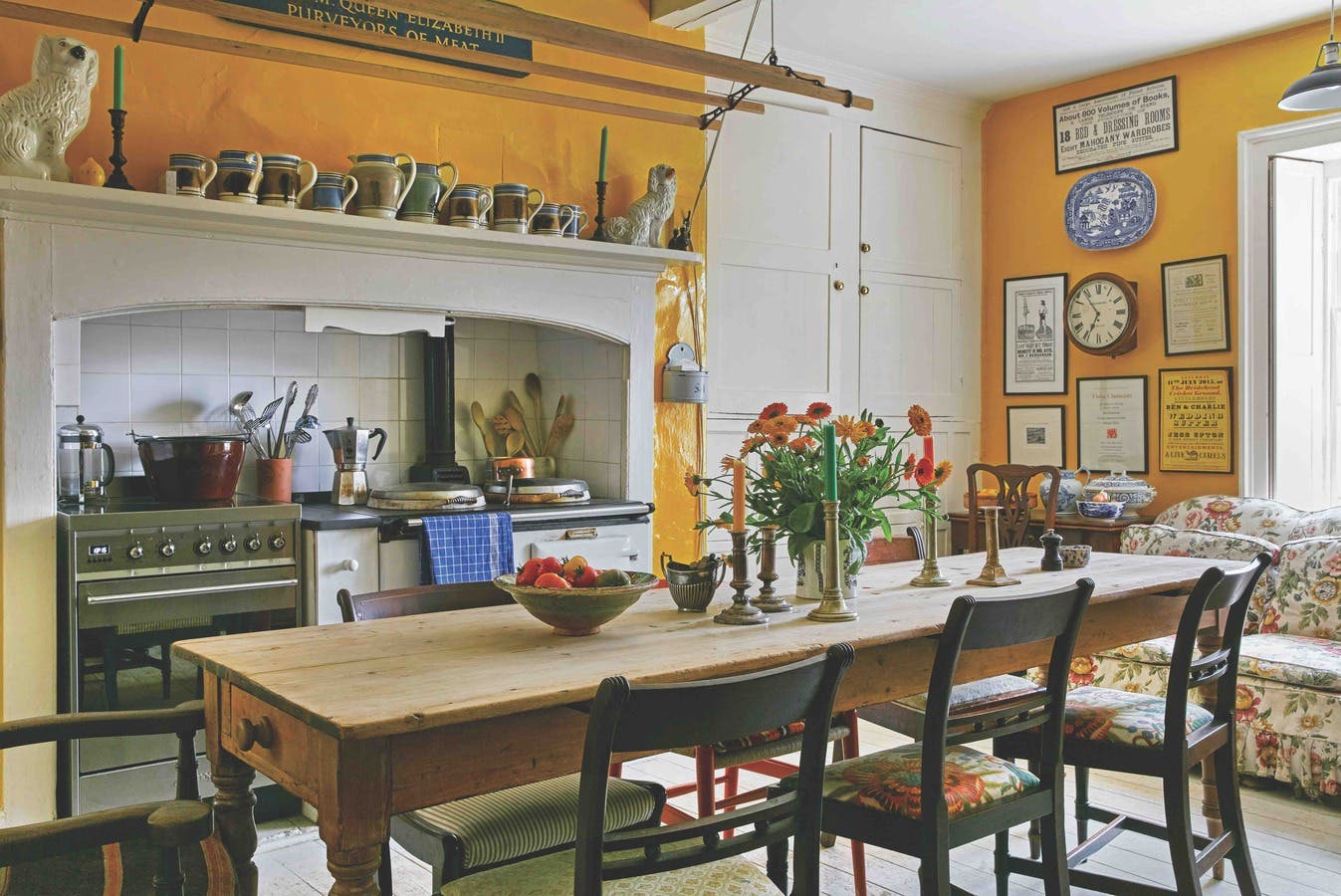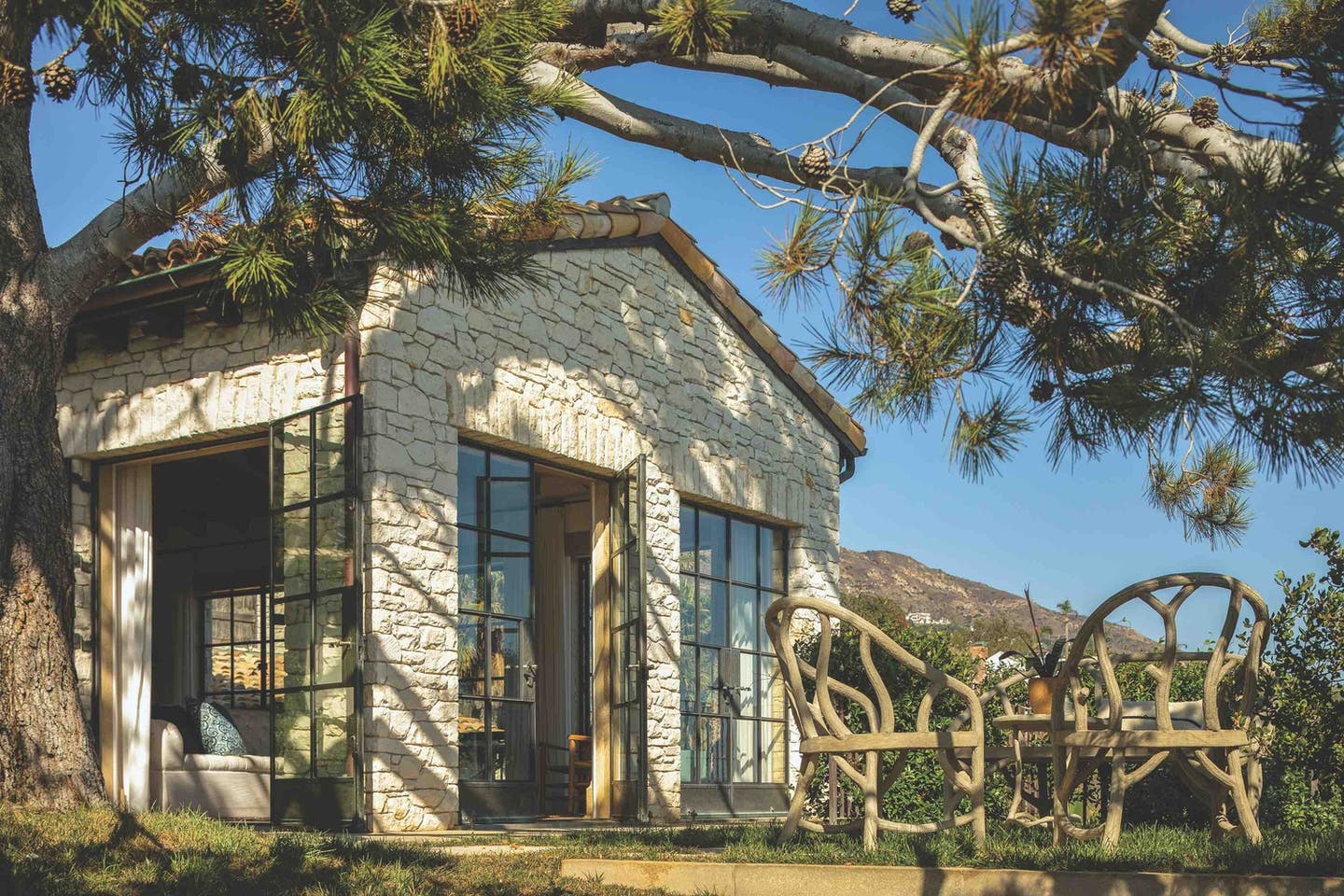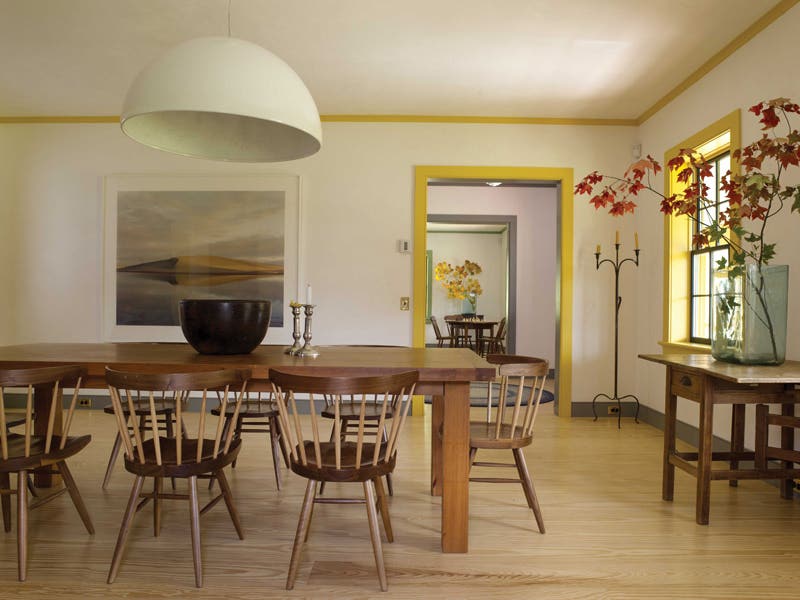
Projects
A New Farmhouse for All Seasons
Project: Residence, Sharon, CT
Designer & Project Manager: Rafe Churchill, LLC, Sharon, CT; Rafe Churchill, principal
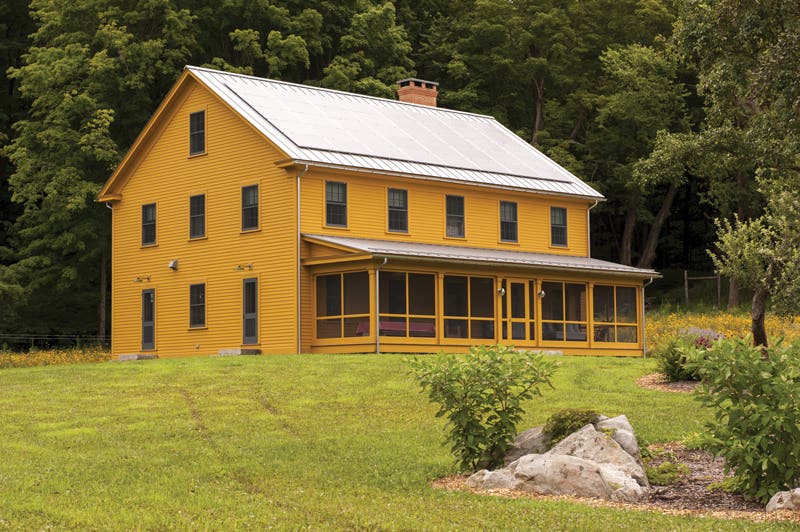
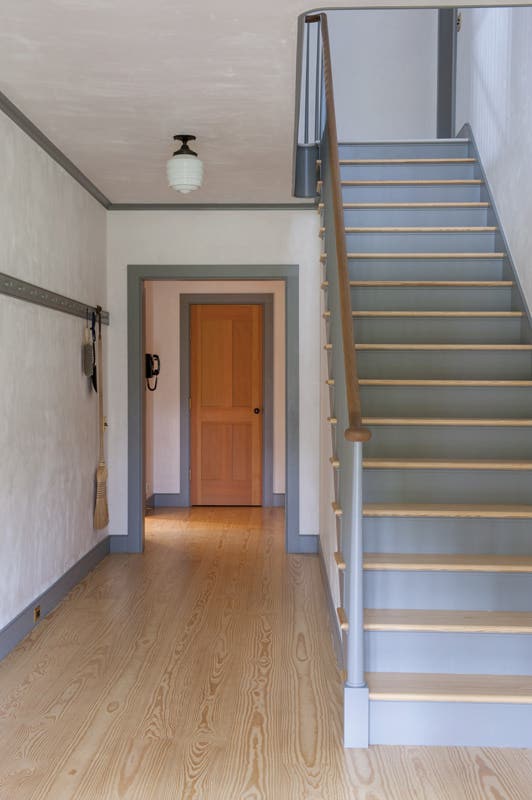

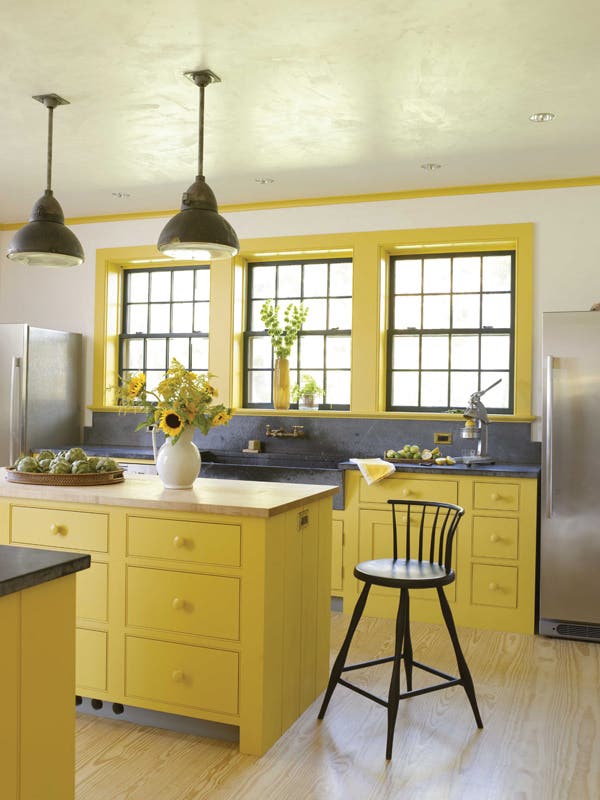
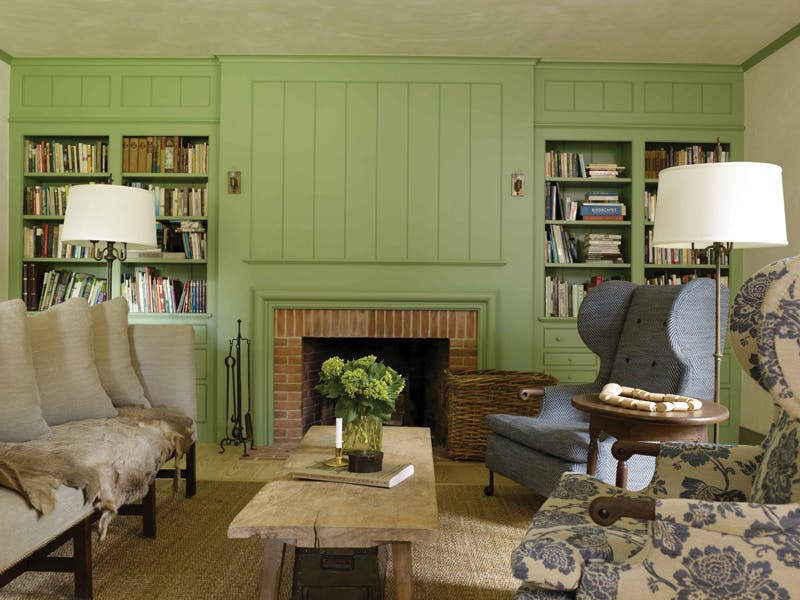
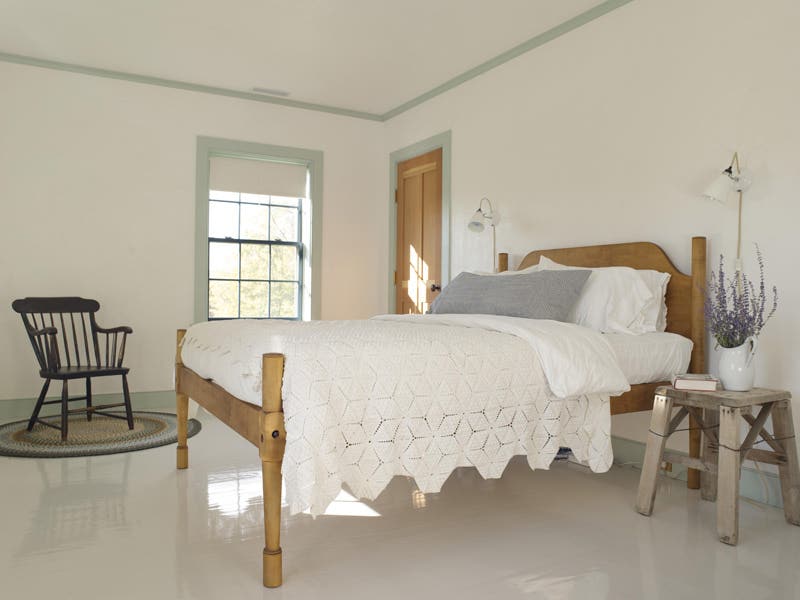
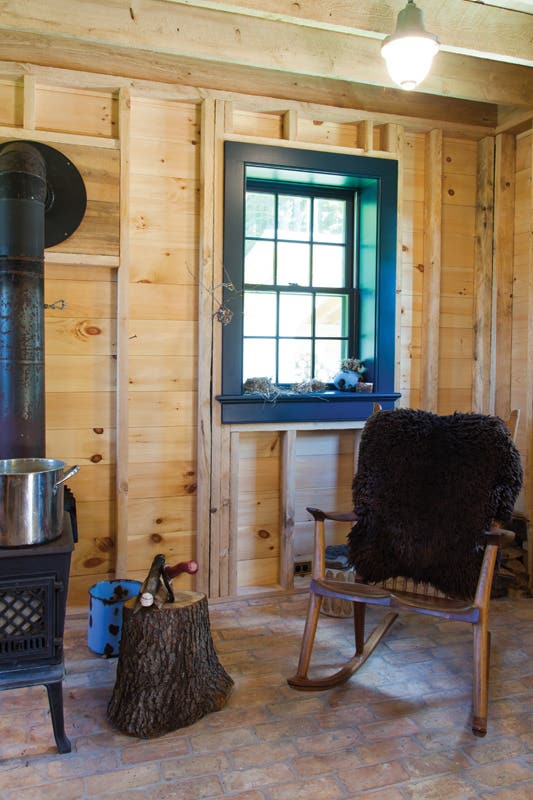
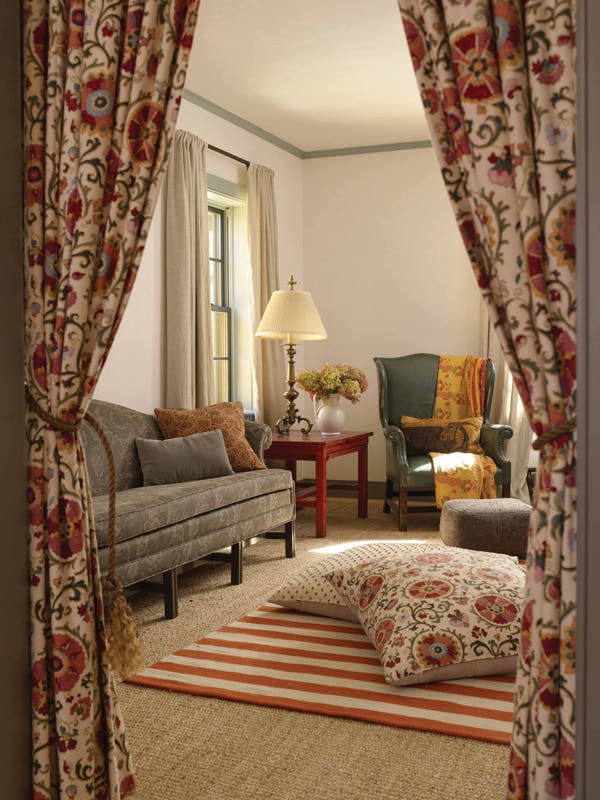
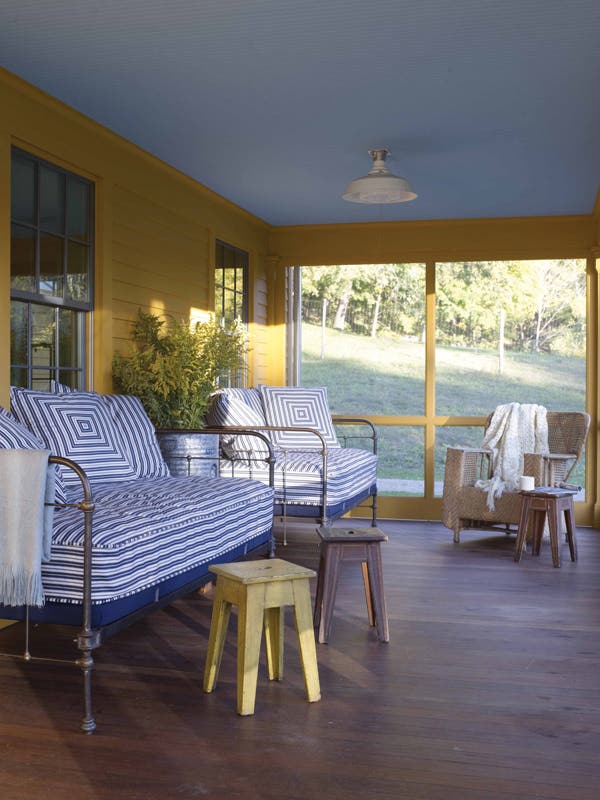
In his celebrated picture book, One Morning in Maine, author Robert McCloskey describes a day in the life of a little girl, Sal, growing up in Brooksville, ME. Among Sal's adventures is a maiden trip to the inland grocery store, getting an ice cream, and searching for a missing tooth – all of which revolve around the region's rugged coastline and the family's simple, sensible farmhouse.
The latter, and its semi-fictionalized lifestyle, resonated with repeat clients of Sharon, CT-based Rafe Churchill, LLC. Having previously completed their townhouse in the Red Hook neighborhood of Brooklyn, NY, the design and project management firm was well acquainted with the clients' tastes and eco-conscious, energy-efficient approach to design. This time, however, the clients sought a new direction; a Sharon, CT, countryside retreat from their life in the city. With its open fields and broad views, the site was ideal for a new 4,000-sq.ft. farmhouse oriented around an agrarian livelihood – in tune with the client's passion for permaculture and sustainable farming.
"They brought a copy of One Morning in Maine to the first design meeting," says Rafe Churchill, principal. "Their goal for the country house was a more modest and simple experience. Although not a small house, it was important to the owners that the children share a bathroom, that guests share a bathroom, and that there were not large suites throughout the house."
In search of examples that the family could see and touch, Churchill took the clients exploring early-1900s properties within a few hours' radius of the site. Among those properties that resonated most with the group were the homes and utilities buildings of the Shaker villages of Hancock in Pittsfield, MA, and Sabbathday Lake in New Gloucester, ME. Not only were the clients drawn to the aesthetic, but they also admired the divisions of space. "Within Shaker communities, you don't really find houses, you find workshops and other simple buildings that have very specific uses, and dorm-style housing," says Churchill. "They wanted to take that idea, and the Shaker colors, moldings and storage solutions and integrate them into the farmhouse."
Project Challenges
The challenges of the project were two-fold: create a net-zero building while retaining the simplicity of the farmhouse aesthetic. Churchill's approach to this, and all of his firm's sustainable design projects, was crystal clear. "I have done several so-called 'green houses' and the problem that always comes up is that people get confused and think that the house must represent the mechanical systems," says Churchill. "So I said to everyone in the beginning, 'We don't want to be too aware of the technology – it should be as inconspicuous as any other mechanical system.'"
"The house doesn't have a lot of glass, and nobody has to know what is going on," he adds. "The owners just assumed that we could do it, which was helpful. Many clients come to us and say, 'I want to do a LEED house or a net-zero house,' and assume that it has to be Modernist, but the fact is, that is not even close to the truth."
Easily mistaken for a restored historic home, the farmhouse façade is dominated by a wide front porch, six-over-six double-hung windows, and generous cornices at the eaves. Each of its two floors is roughly divided into quarters, with a traditional center hall that leads to a single-story wing with a mudroom, powder room and side porch – which suggests that the house expanded over time.
While the clients admire traditional design forms, they did not desire a purely traditional floor plan. "I have a 1929 farmhouse with little rooms," says Churchill. "While it is great, because it offers several intimate spaces and privacy, the dining room, for example, is small. The owners visited my house and said, 'This is great, but let's face it, we have an opportunity to give ourselves a little more room and go for an open plan - as we have in Red Hook.' What we ended up with is a circular floor plan that works very well for kids, parties and modern life in general."
The first floor hall features a central staircase, and large cased openings to the generously-sized dining room and kitchen on one side, and the living room and study on the other. Off the second-floor hall are three bedrooms, including a master bedroom suite, as well as two bathrooms and a laundry room. "The master bedroom has its own bathroom and dressing room, which is a departure from a traditional farmhouse plan," says Churchill. "And as far as the first floor goes, we increased the scale of the first floor because the owner wanted a little more space for modern living."
The landscaping plan thinks long term with a 35-acre restoration of existing farmlands that encompasses four-season gardens, composting beds, barns, an orchard and a managed forest. These are serviced by multiple sheds and a workshop/storage building – all built from locally-harvested pine and hemlock. The pool is maintained by an ozone and ultraviolet-light purification system, rather than chlorine.
Other key sustainable features of the farmhouse include 10-Kilowatt solar array, geothermal wells, and heat pumps for radiant heat and temperature maintenance of the outdoor pool. Two energy-recovery ventilation systems, two steam humidifiers, and fresh air supplies for the wood stove and kitchen exhaust complete the interior climate systems.
No Fossil Fuels
The house functions entirely without fossil fuels, while high-efficiency appliances and reclaimed, salvaged and locally-milled materials comply with green-building strategies. These included reclaimed brick flooring by Ecologie, LLC of Sharon, CT; locally-sawn pine and hemlock by Ed Herrington, Inc. of Lakeville, CT; reclaimed porch flooring by Hudson Company of Pine Plains, NY; reclaimed plumbing fixtures and fittings by Nor'East Architectural Salvage of South Hampton, NH; and vintage and reproduction lighting by PW Lighting of Great Barrington, MA.
Air conditioning may seem like a summer essential, yet the farmhouse's structural insulated panel exterior-wall system and the open-cell foam roof insulation passed a recent test with flying colors. "I visited the house during a recent heat wave," says Churchill. "With no a/c and just a wide south-facing porch and very well insulated walls, the house was 72F inside while the outdoor temperature was 92F."



